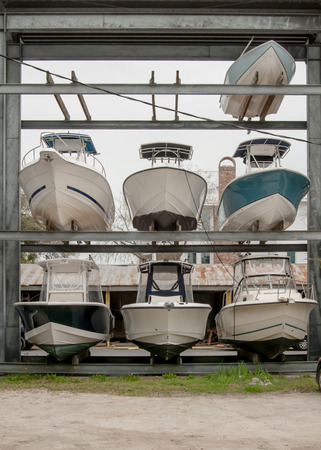As the boating season ends and the cold winter settles in, it’s important to protect the investment you’ve made in your boat by making sure that you winterize it properly. Failing to properly prepare your boat for the winter season can lead to problems while your boat is in storage, leading to a good chance that you need to make repairs to your boat in the spring.
Winterizing your boat may be more simple than you think. As Discover Boating discusses, winterizing your boat for the cold season is a worthwhile investment of time and money that helps you rest easy, knowing that you won’t run into any problems when it’s time to put it back into the water.
 Engine
Engine
One of the first things you want to do when winterizing your boat is focus on the engine. For inboard engines, Discover Boating recommends allowing the engine to for a few minutes to warm up and then changing the oil and the oil filter. You should also flush the engine with antifreeze, using an intake hose connected to the water pump and running the engine briefly so that it circulates through. This is also a good time to check transmission fluids and spark plugs, as well.
For outboard engines, you should add fuel stabilizer to keep your gas usable through the freezing season. You should also run the engine for a few minutes with the cowl off and spray a fogging solution into the air intakes. As you do this, remove the fuel line and allow the engine to run off residual fuel until it stalls out, burning off any lingering traces of fuel in the carburetors and helping minimize any deposits from evaporated fuel. Last, grease the propeller shaft and threads with a water-resistant grease and change the lower unit’s gear oil. Finish with a wash and polish or wax.
Fuel
As with the outboard motor, if your vessel has any gas tanks, be sure to treat remaining fuel balances with stabilizer. Some ethanol fuels can spoil easily in cold weather, while partially full tanks can leave more opportunity for condensation to form, adding water to the fuel. Whether you opt to store with a full tank or not, stabilizer is intended to minimize the impact of winter conditions and help preserve your tank for the spring boating season.
Onboard Systems
Before you leave your boat in storage, you also should go through and remove any valuables and electronics. Electrical items tend to suffer in cold weather, even when disabled, so taking them home to a climate-controlled space can prevent problems the next season. You should also pack up your flares, fire extinguishers and flotation devices. When you get the boating itch over the snowy months, you can look these over, making sure that they are still in good condition and clean or replace as necessary.
For even more tips, check out Discover Boating’s guide to winterizing.
Winterizing your boat requires time and money, but if you are going to be a boat owner, you should do it properly to avoid problems in the future. While getting your boat winter-ready takes some work, removing your V-Dock is incredibly simple. Our convenient roll-in, roll-out boat docks can be taken out in a matter of minutes and rolled back into the water easily when the ice melts again in the spring. Take advantage of this off season and order a new V-Dock for your property today and have it ready to go in the spring. Shop online or call us at 888-888-DOCK to learn more.







Leave a Reply